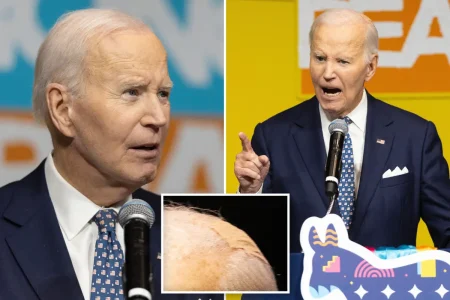Shifting Dynamics: How US-China Tensions Are Testing South Korea’s Oldest Alliance
The Balancing Act: Seoul Caught Between Superpowers
In the diplomatic corridors of Seoul, a palpable tension has emerged as South Korea navigates what many officials privately describe as the most challenging period in the nation’s decades-long alliance with the United States. As Washington intensifies its strategic focus on containing China’s global influence, South Korea finds itself in an increasingly precarious position – caught between its security guarantor and largest trading partner. This diplomatic tightrope walk has become more treacherous in recent years, with President Biden’s administration doubling down on policies aimed at curbing Beijing’s technological and military advancement while expecting allies to fall in line. “South Korea’s geopolitical reality has always been complex, but the current situation represents a unique challenge,” explains Dr. Min-hyung Kim, international relations professor at Kyung Hee University. “The alliance with the US remains the bedrock of our security framework, yet our economic prosperity is inextricably linked to China. As Washington increasingly views global relationships through a China-centric lens, Seoul faces difficult choices with potentially far-reaching consequences.”
Historical Context: An Alliance Forged in War, Tested by New Realities
The US-South Korea alliance, formalized in the 1953 Mutual Defense Treaty following the Korean War, has weathered numerous storms throughout its 70-year history. From the Nixon Doctrine’s implementation to disagreements over North Korea policy during various administrations, the relationship has demonstrated remarkable resilience. However, the current friction differs fundamentally from previous challenges. While past tensions typically centered on bilateral issues or approaches to the North Korean threat, today’s strain stems from broader geopolitical competition that forces Seoul to potentially choose sides in a way it has historically avoided. The alliance was built during the Cold War’s binary world order, but South Korea’s economic transformation has created multilayered interests that complicate simple alignments. South Korean President Yoon Suk Yeol, who came to office promising closer ties with Washington, has found himself walking a delicate line – publicly affirming the alliance while carefully calibrating economic policies to avoid antagonizing Beijing. “What we’re witnessing isn’t merely another chapter in alliance management,” notes Ambassador James Steinberg, former US Deputy Secretary of State. “It represents a structural challenge to how South Korea has positioned itself in the post-Cold War international system. The strategic ambiguity that served Seoul well for decades is becoming increasingly difficult to maintain as competition between Washington and Beijing intensifies.”
Economic Entanglements: The China Factor in South Korea’s Prosperity
The economic dimension of South Korea’s dilemma cannot be overstated. China absorbs approximately 25% of South Korean exports and serves as the crucial hub for regional supply chains that power Korean industrial giants like Samsung, LG, and Hyundai. When South Korea deployed the US THAAD missile defense system in 2016, China’s economic retaliation – including boycotts of Korean products and restrictions on tourism – cost the Korean economy billions and demonstrated Beijing’s willingness to leverage economic interdependence for political ends. Now, as the US implements expansive semiconductor restrictions targeting China and pressures allies to join various economic security initiatives, South Korean businesses face potential exposure to significant economic disruption. “Korean firms have spent decades building their presence in the Chinese market and integrating into regional supply chains,” explains Dr. Seong-hyon Lee, visiting scholar at Harvard University’s Fairbank Center for Chinese Studies. “Sudden decoupling isn’t just impractical – it could be economically devastating.” This economic reality creates domestic political pressure that complicates Seoul’s diplomatic calculations. A recent poll by the Chicago Council on Global Affairs found that while 83% of South Koreans view the US alliance favorably, only 29% support policies that would require choosing the US over China in economic matters. This public sentiment reflects the sophisticated understanding among ordinary Koreans about their nation’s delicate position.
Security Imperatives: North Korea and the Changing Regional Architecture
While economic considerations push Seoul toward maintaining balance, security imperatives pull it closer to Washington. North Korea’s advancing nuclear and missile capabilities, demonstrated through record numbers of weapons tests in recent years, underscore South Korea’s continued dependence on US extended deterrence. The US maintains approximately 28,500 troops in South Korea and provides critical intelligence and military assets that form the backbone of the peninsula’s security architecture. This security relationship has deepened under President Yoon, with expanded joint military exercises and enhanced trilateral cooperation involving Japan. Yet even this core security partnership faces new complications as Washington’s China focus reshapes regional dynamics. US strategies increasingly aim to integrate allies into broader Indo-Pacific frameworks primarily designed to counter Chinese influence – potentially drawing South Korea into contingencies beyond the peninsula. “The US-South Korea alliance was historically peninsula-focused, but US expectations have evolved,” says Dr. Victor Cha, Korea Chair at the Center for Strategic and International Studies. “Washington now views Seoul as a potential contributor to broader regional security objectives, particularly regarding Taiwan and the South China Sea. This expanded scope creates new friction points, as many in South Korea remain wary of being drawn into US-China competition beyond their immediate security concerns.” This tension manifests in debates over South Korea’s participation in the Quad Plus format, its role in semiconductor export controls, and its approach to regional maritime security operations.
Diplomatic Maneuvering: Seoul’s Quest for Strategic Flexibility
Facing these cross-cutting pressures, South Korean diplomacy has increasingly focused on creating breathing room through strategic flexibility. President Yoon’s administration has attempted to navigate these waters by embracing the US alliance rhetorically while maintaining pragmatic engagement with China. This approach was evident when South Korea joined the US-led Indo-Pacific Economic Framework but declined to participate in its most China-sensitive components. Similarly, Seoul has expanded security cooperation with Washington while avoiding explicit endorsement of US positions on Taiwan or the South China Sea. This balancing act extends to technology policy, where Korea has implemented some export controls on advanced semiconductors while seeking carve-outs that protect its companies’ operations in China. “Korean diplomacy has become increasingly sophisticated in finding creative middle paths,” observes Dr. Jae-ho Chung, professor of international relations at Seoul National University. “Rather than choosing sides, Seoul is attempting to redefine the choice itself – emphasizing principles and interests rather than alignment with either great power.” This approach builds on South Korea’s growing confidence as a middle power with its own agency and interests. The Yoon administration has framed its foreign policy around the concept of “global pivotal state” – positioning South Korea as an actor that contributes to international norms and cooperation beyond the traditional great power competition framework. Through initiatives like the Korea-ASEAN Solidarity Initiative and expanded diplomatic presence in the Global South, Seoul seeks to diversify its international relationships and reduce overdependence on both Washington and Beijing.
The Road Ahead: Navigating Deepening Competition
As US-China competition intensifies, South Korea’s strategic dilemma will likely become more acute. The recent Biden-Xi summit in San Francisco offered temporary diplomatic relief but did little to resolve the structural competition reshaping the Indo-Pacific landscape. For South Korea, key challenges loom on multiple fronts. Technology policy represents perhaps the most immediate test, as the US continues to expand export controls on semiconductors and emerging technologies while China races to achieve self-sufficiency. Korean firms must navigate increasingly complex regulatory environments while maintaining global competitiveness. Security cooperation faces similar complications, with US requests for greater Korean contributions to regional contingency planning potentially conflicting with Seoul’s desire to maintain productive relations with Beijing. The North Korean threat adds another layer of complexity, as addressing Pyongyang’s nuclear program effectively requires cooperation from both Washington and Beijing. “South Korea faces a fundamental challenge in reconciling its security and economic interests as US-China competition deepens,” concludes Dr. Leif-Eric Easley, professor of international studies at Ewha University. “The coming years will test Seoul’s diplomatic creativity and strategic vision as it attempts to preserve alliance cohesion while maintaining necessary economic relationships with China.” For ordinary Koreans, these geopolitical tensions translate into tangible concerns about economic prosperity, national security, and Korea’s place in a changing world order. As one senior Korean diplomat put it, speaking on condition of anonymity: “Our challenge is not simply managing relations with two great powers, but defining our own future in an increasingly polarized international environment. The US-Korea alliance remains essential, but it must evolve to accommodate South Korea’s complex interests rather than forcing binary choices that serve neither country’s long-term objectives.” This evolution represents both the greatest challenge and opportunity in the alliance’s seven-decade history.










